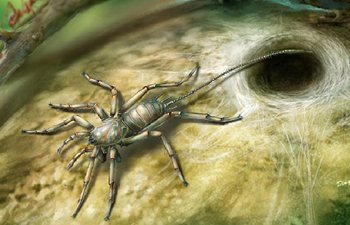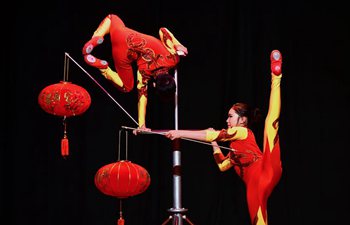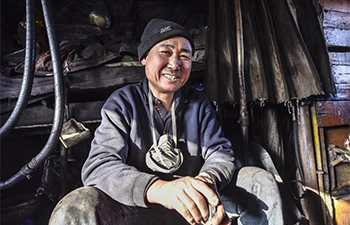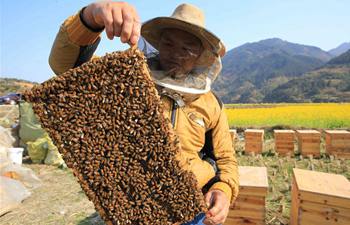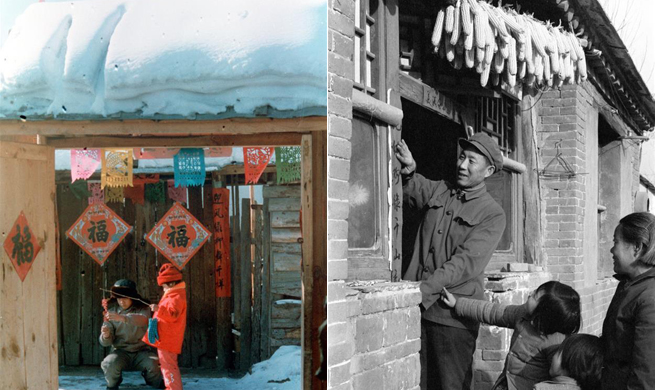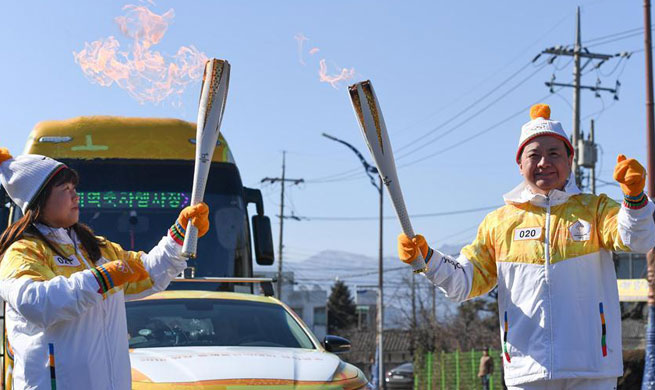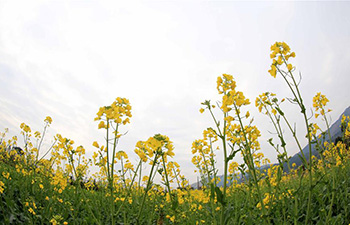GUANGZHOU, Feb. 6 (Xinhua) -- Blood orange growers in the southern Chinese city of Lianjiang have long ditched chemical fertilizers. Though ditching chemicals caters to the growing appetite for organic foods, it was not the farmers' original intention.
They did so to help their groves survive "the yellow dragon," a deadly disease threatening citrus groves in Asia, Africa and America. In China, the disease, also known as Huanglongbing, wreaks havoc in more than 10 citrus-growing regions.
It is incurable, but controllable and preventable, according to Zhong Guangyan, a researcher studying "the yellow dragon" for more than 30 years.
Concerted efforts of the local government, farmers and horticulture technicians have contributed to an initial victory of Lianjiang's battle against the pandemic.
CRASH
A citrus tree is infected with the disease by a psyllid, which carries bacteria and leaves bacteria to the tree when eating its leaves. The bacteria will gradually kill the tree, although it can live and bear fruit for a while after infection.
Leaves of sick trees will turn yellow and fruit will fall. There is no cure. "Sick trees must be pulled from the earth and the soil must be disinfected," Zhong said.
A 2015 report from University of Florida showed that the disease had claimed more than 160,000 acres of citruses in the state since 2007.
Called China's "blood orange town," the city had a golden period in the 1990s when over 10,000 hectares of fruit were grown and over 100,000 tonnes packed each year. However, Lianjiang was blighted by the bug twice.
In 1993, a yellow dragon outbreak nearly exterminated blood orange groves in Lianjiang, leaving only hundreds of hectares alive. Growers spent more than 10 years recovering their groves to a total of 5,000 hectares, but another epidemic in 2007 destroyed them again.
Guan Xiyun, a local grower, lost his groves in 1993 and left Lianjiang. In 2005, he joined the city's efforts to restart the business, and lost 40 percent of his two-hectare groves in the 2007 outbreak.
"This time, we realized that we couldn't just sit still, wishing that it [the disease] would give us a break," Guan said.
REBIRTH
The local government spearheaded the war against "the yellow dragon," by promoting bacteria-free saplings, establishing cooperatives and keeping a closer eye on the disease.
"A big problem is that, you don't know whether your neighbor has grown a sick sapling," Zhong said.
The government started subsidizing bacteria-free saplings produced by a governmental breeding center since 2010, because no one knew whether saplings then traded in the market, all grown by farmers themselves, were clean or not.
Around 80 percent of the cost of a bacteria-free sapling is covered by the government. It means a farmer only needs to pay 1 yuan for each, only half of the price of a traditional sapling.
The government also helped set up cooperatives for blood oranges, as preventive measures can be more easily promoted in large, collectively-run orchards than small ones run by individuals.
"Neglect of a small number of growers could send the whole industry tumbling," said Huang Muzhong, head of the city's agriculture bureau.
The measures include use of organic fertilizers and equipment that captures psyllids, besides early detection and handling of sick trees.
Growers found that leaves of trees fed by chemical fertilizers are larger and thicker, and are more attractive to the bug. Therefore, they turned to organic alternatives, which can avoid rapid growth of the groves.
The government educated farmers about the disease. In addition, technicians would comb all orchards from September to December every year, the period of highest-risk.
Currently, the morbidity of Guan's 34-hectare groves is 2 percent.
Last year, groves of blood oranges in Lianjiang hit 4,500 hectares, 730 hectares more than 2016, with an output of more than 50,000 tonnnes.
Riding on an e-commerce boom, the city's blood oranges are sold across China, with a maximum of 5,000 kg shipped a day, according to Liu Ziyuan, head of an e-commerce service center in Qingping Township, Lianjiang.
"It is interesting that, our fight against the bug has pushed us towards a more modernized way of farming," Huang said.
Modernization of agriculture is high on the agenda of the Chinese authorities.
The "No. 1 central document" released on Sunday set the timetable that China's rural productivity and agricultural supply would improve substantially by 2020, with basic modernization of agriculture and rural areas achieved by 2035.





